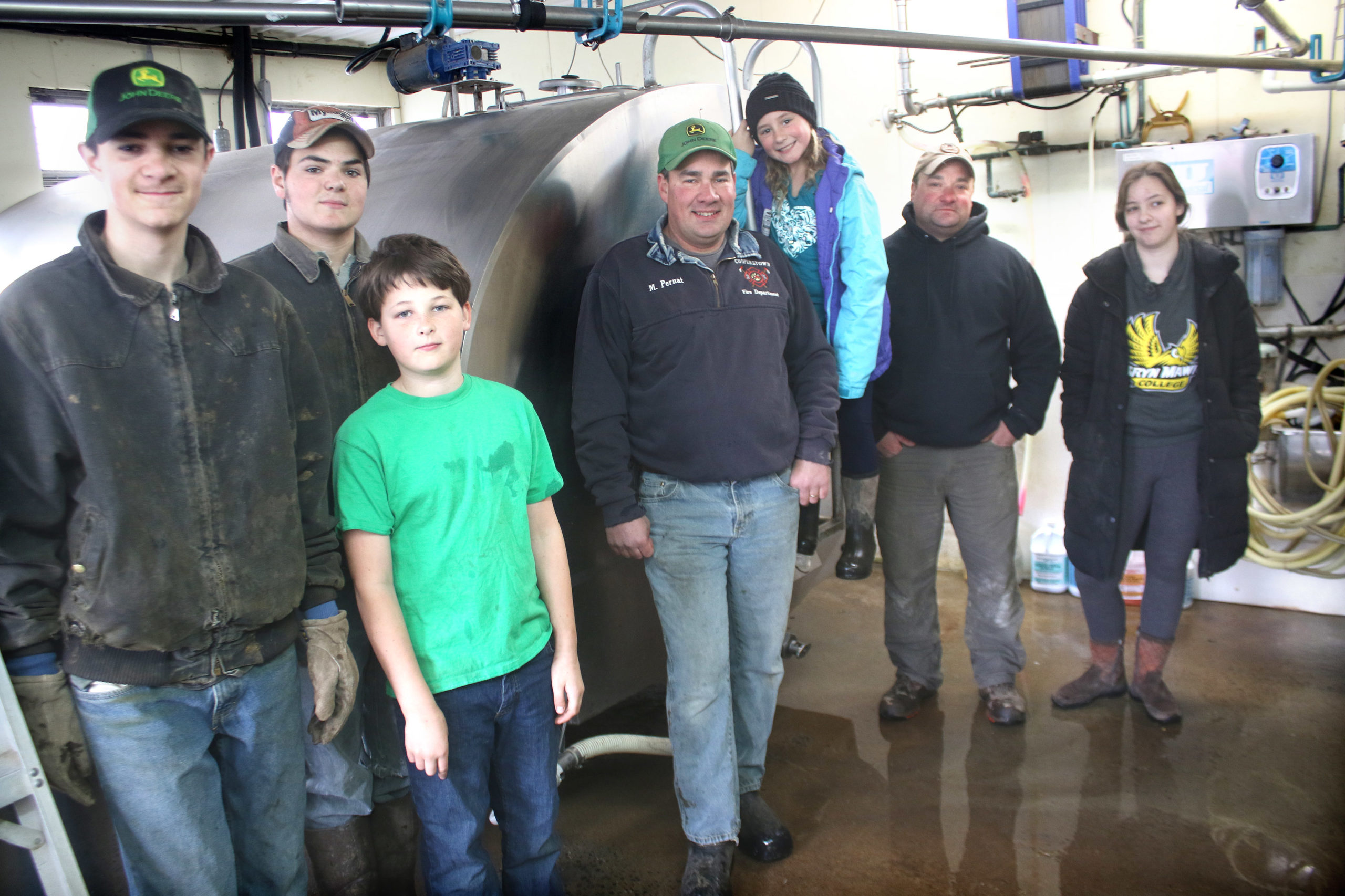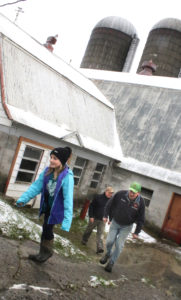As Demand Dips,
Farms Dump Milk
For Pernat Family, This
Is A First In 100 Years

By LIBBY CUDMORE • Special to www.AllOTSEGO.com

Bailey Pernat leads Uncle Matt and dad Mark out of Fly Creek Valley barn.
FLY CREEK VALLEY – Since 1920, Mark Pernat’s family has sold milk from their Fly Creek Valley farm. “My dad always said, ‘If you make the milk, they’ll come buy it,’ said Pernat.
But the truck didn’t come on April 5.
“Our co-op called and told us we had to dump our milk and we would not be paid for it,” he said. “In 100 years, that has never happened.”
In all, the Pernats poured 1,200 gallons of milk – approximately $8,500 worth – onto their fields. “Normally if they ask you to dump, it might be there was an ice storm and the truck couldn’t get through, but you were always paid,” he said. “But with COVID-19, there’s an overabundance of production.”
With limits on dairy products at the grocery store, it might seem like a quandary – but according to David Balbian, Cornell Cooperative Extension area dairy management specialist, there’s so much more than just the cow to consider.
“Processing plants have had disruptions,” he said. “People are calling in sick, their kids are home and they don’t have childcare, the drivers who take the milk to New York City refuse to go because they’re afraid of getting sick.”
Additionally, he said, the closings of schools and reduced business at restaurants – the two largest buyers of dairy products – has reduced the immediate need.
And because it’s illegal to sell raw milk, farmers are left with little choice but to dump what they have. “DEC laws are relaxed enough where you can dump it on your own fields as fertilizer,” said Balbian. “But that’s expensive fertilizer.”
So far, Pernat said, he’s only had to dump once. But it comes after four bad years of low milk prices, making the loss that much harder to swallow. “2020 was projected to be a good year for milk prices,” he said. “They were starting to rise again, they were anticipated to reach $20 per 100 pounds.”
Now, he said, prices are down to $17, and it could go as low as $12. “That’s a 35 percent decrease,” he said. “That’s a really big gap to make up, and a lot of farms can’t withstand that.”
Pernat previously reduced his herd from 200 to 75, and sells bales of hay for horse stables downstate. “It’s more profitable than cattle,” he admitted.
But he’s also looking towards the future. “People have told us we should look into making the farm into Community Supported Agriculture,” he said. “We’re starting to look into how that would work, and maybe into building a bottling plant.”
Customers would pre-pay, he said, and then milk would be delivered directly to them.
He sells his milk to Marcus Dairy, which bottles and sells to markets in New York City and Connecticut. “We want to create our own market,” he said. “It would be neat to keep the milk here.”

